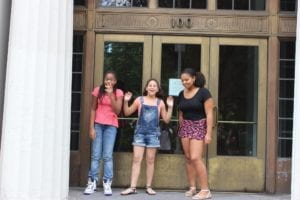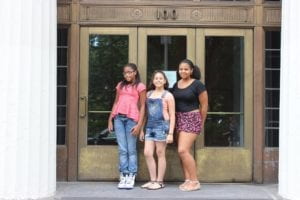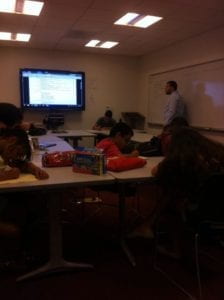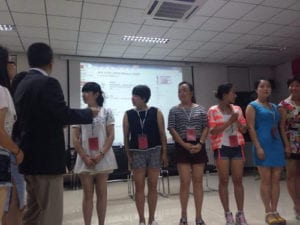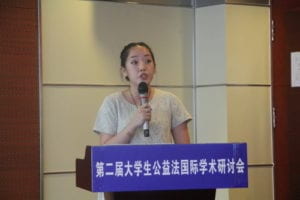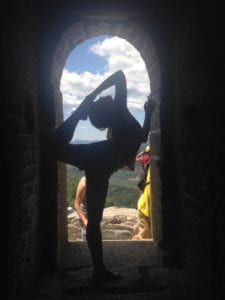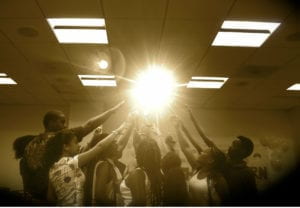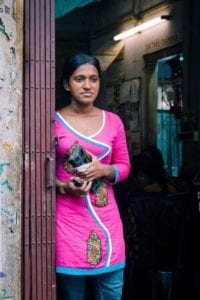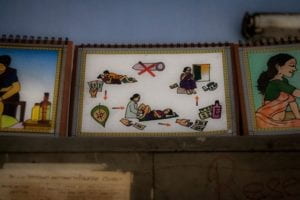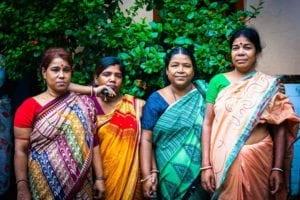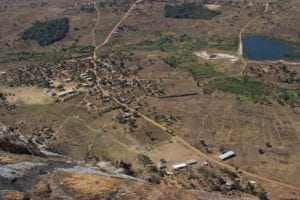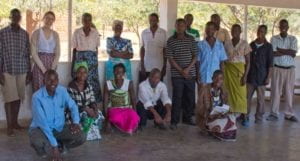Leah Mlyn
Centro de los Derechos del Migrante
Juxtlahuaca, Oaxaca
After four days in and around Oaxaca City—the vibrant beautiful capital city of the state of Oaxaca—I’ve returned to my hotel room in Juxtlahuaca. Oaxaca City is five hours by van from Jux. I traveled with Adelina, the only other worker in the office in Jux. Our trip included planning for two educational workshops in nearby communities from which migrants originate, numerous introductory visits to the municipal buildings and officials of other surrounding communities, and two meetings with other organizations in the area that also work for the benefit of migrants.
The trip to Oaxaca City was both a whirlwind of new sights and sounds and a complete and well-rounded learning experience. The city, with her colorful short buildings, narrow streets, and huge bustling zocalo (city center) is very different from Mexico City; it has a European laid-back vibe bursting with indigenous culture. It’s even more different from Juxtlahuaca, the small town in which I am living.
I got a thorough, extreme, and intense experience of the type of outreach performed by the Juxtlahuaca office of the Centro de los Derechos del Migrante (CDM). CDM’s outreach department is impressive and far-reaching, as both the offices in Mexico City and Juxtlahuaca often take trips to communities with which they have forged relationships—communities they know send many migrants each year to the US to work.
During our trip to Oaxaca City, Adelina and I took collective taxi rides each day to between two and seven communities that are new partners with CDM. Each taxi goes to a different community close to the city and packs in about three to six passengers, who each pay a low fee for the transport. Adelina and I met with municipal officials (the US equivalents to mayors and city officials) to drop off informational materials from our offices, ask them about the current migration patterns in their municipality, and inquire if they wanted to plan any upcoming educational workshops for their community members.
The trip was exhausting and fascinating, with some great successes, such as meeting with a group of men who had recently migrated, who were hanging out outside the municipal building and conducting an impromptu “Know Your Rights” workshop. We also ate a huge delicious meal at the home of a woman in the town where we did a late-night, preplanned “Know Your Rights” workshop. And I will never forget riding in a friendly man’s truck bed to the municipal center where we found a primaria (elementary school) in the middle of their graduation proceedings. “I Want it That Way” by the Backstreet Boys was playing!
The trip also presented some failures, such as a cancelled workshop and a missed bus home. I also had difficulty completing the project I started in Mexico City. I had wanted to speak with many migrant women in focus groups and small groups to gather their opinions on the current materials CDM distributes to them, with the goal of recommending revisions for the next version of these educational tools. But in almost every town we went to, the municipal officials reported that female migration was very low.
Female migration from Oaxaca to the US is different from migration from many other parts of Mexico to the US, partly because the indigenous cultures still predominate there. Many of the inhabitants of the towns we visited speak indigenous languages and not much Spanish—in fact, less than I do. Oaxacan women migrate less often because their culture dictates they should stay committed to their traditional duties, such as cooking, selling goods and food in the tianguis (Triqui word for “market”), and caring for the children and the home.
We did meet a few migrant women, though, and hearing stories of one woman’s time in the Eloy detention center in southern Arizona made me emotional. I realized it was possible that I had seen her or those she crossed the border with during my activism and studies in that region. Knowing that area well brought me closer to many migrants who I talked with, as many pass through Tucson.
The last few weeks of my internship were busy in the office at Juxtlahuaca but even busier outside of it. Juxtlahuaca celebrates its patron saint, Santiago, every year with a week-long fiesta patronal. The entire town essentially takes off from work, fills the streets with cut paper decorations, and practices some of the most beautiful and unique traditions I’ve ever witnessed. I watched the guajolotes (basically turkeys) run through the streets and then ate them in a delicious mole at the community kitchen. I watched the traditional dances of the diablos, chareos, and chilolos, which somehow told a story of an ancient Moorish and Catholic battle. I attended parties every night, where I learned to dance to chilenas, norteñas, and cumbias. I was invited into families’ homes, where I celebrated with them till 4 AM, and was even invited back for the fiesta next year.
My experiences in Mexico City and Oaxaca taught me so much about migration, human rights, and the kind of support that organizations like CDM need. I also learned so much Spanish and learned that I love to travel alone and that my passion for these issues and Mexico will continue to bring me to fruitful and productive places, spaces, and times.
